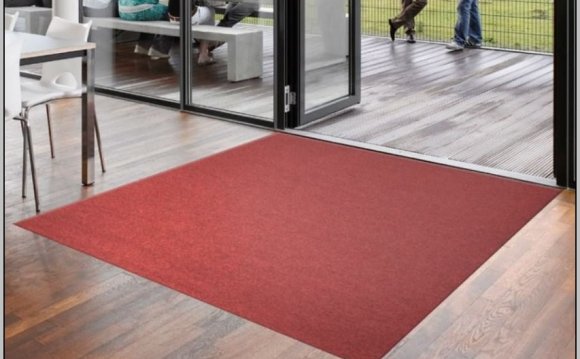
 Rugs warm hardwood floors but they need a latex backing to prevent slipping.
Rugs warm hardwood floors but they need a latex backing to prevent slipping.
When a rug slips underfoot when stepped on, or you notice odd little white, rubbery flakes that appear on the floor near the rug, more than likely the latex backing has begun to deteriorate. Manufacturers paint a liquid latex on the backside of rugs to prevent tufts of yarn from working loose, as well as to make the rugs less slippery on polished floors. One drawback of latex is that it breaks down quickly. Repeated washings - especially with chlorine bleach or harsh chemicals - exposure to ultraviolet rays, floor wax and other floor care products accelerate the deterioration process.
Wash the rug as usual and dry completely. Let the rug air dry on the line out of sun. Drying it on a high-heat setting contributes to the deterioration of the latex backing.
Brush the back of the rug briskly with a soft scrub brush to remove any loose particles of old latex. Shake it vigorously.
Place the rug upside down on a pad of old newspapers or cardboard on a tabletop or other work surface, and smooth it out flat.
Open a can of liquid latex - available at most arts and crafts or hobby stores - and pour a small amount onto a foam plate.
Dip a wide paintbrush into the latex on the plate and brush the latex onto the back of the rug in short, overlapping strokes, starting in any corner. Any inexpensive, 3 or 4 inch wide ordinary bristle paintbrush works. You will throw it away when finished, so don't spend too much.
Continue dipping the brush in latex and applying it to the back until you have an even layer across the back of the entire rug.
Cut a piece of cheesecloth to the size of the rug with scissors. Open it out flat and press it onto the back of the rug while the latex is still wet. Cheesecloth strengthens the rug, prolonging its life.
Use your paintbrush to gently press the cloth into the wet latex until it is flat and firmly attached over the whole rug. A kind of tapping or stippling motion with the end of the bristles works better than trying to brush over the cheesecloth. Brushing tends to dislodge or wrinkle the cloth.
Return any unused latex to the can, and wrap the brush in plastic wrap. Put the wrapped brush in the freezer to prevent the rubber from curing on the brush between applications.
Allow the latex to dry - usually 24 hours or more. You can speed the drying time by applying the latex in a very warm room, because it cures more quickly when warm.
Apply a second coat of latex to the back to completely cover and seal the cheesecloth, otherwise it may absorb water when the rug is wet - which could hasten deterioration of the new latex layer. If necessary, apply a third coat as soon as the second coat is dry.
Throw away the paintbrush and plate or wash the brush.
Things You Will Need
- Scrub brush
- Newspapers or cardboard
- Liquid latex
- Wide, inexpensive paintbrush
- Foam plates
- Cheesecloth
- Scissors
- Plastic wrap
- Distilled water, optional
Tips
- Clean latex - or thin it, if necessary - using distilled water only. Do not use ordinary tap or bottled water or the latex curdles and becomes instantly unusable.
Warnings
- Latex gives off strong ammonia fumes, so use only in a well-ventilated area.
- Keep the can of latex above freezing or it may not cure properly. This does not apply to the temporary storage of the paintbrush in the freezer between uses.









